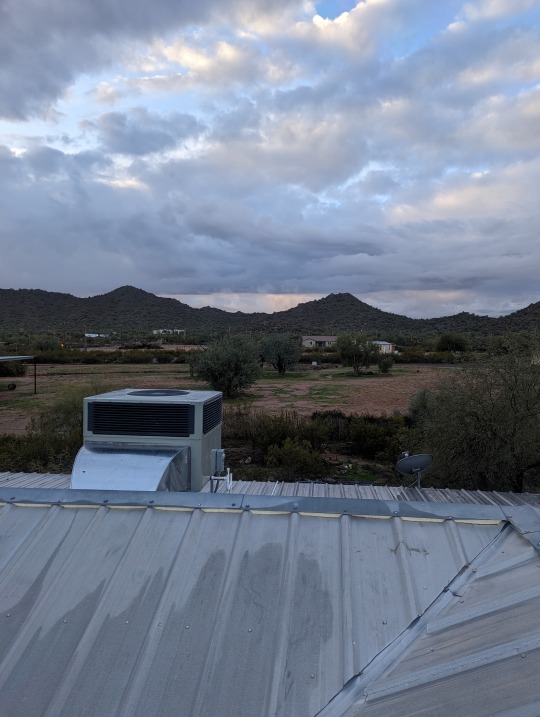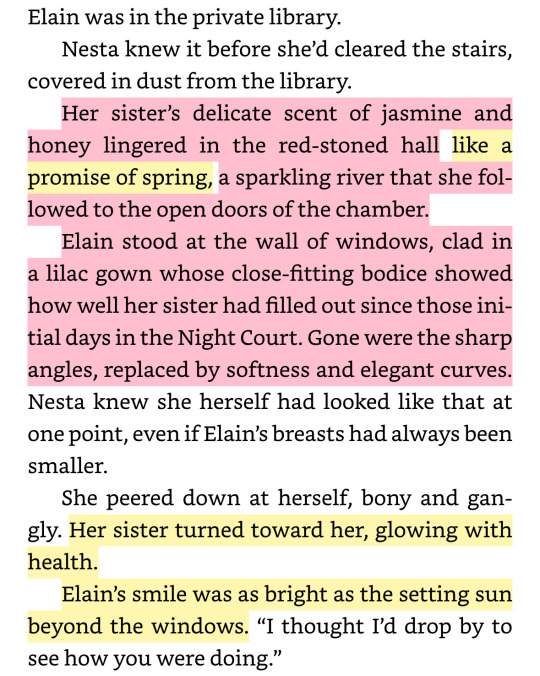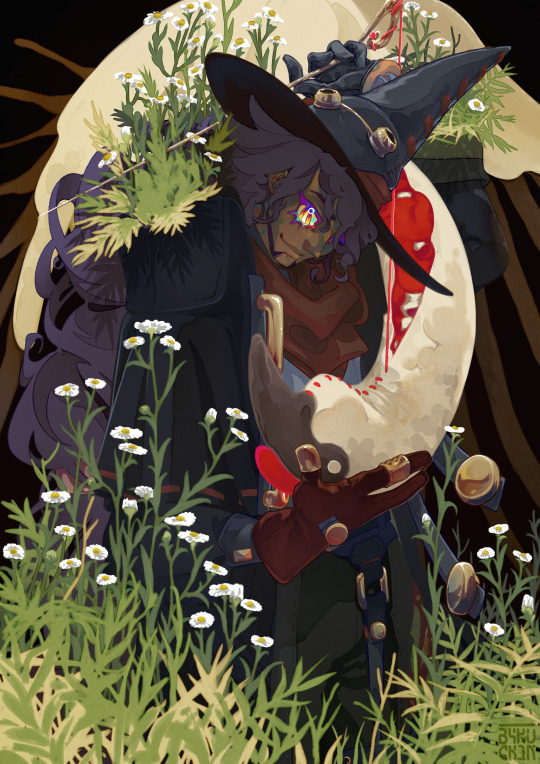#Land Restoration
Explore tagged Tumblr posts
Text
Excerpt from this New York Times story:
The two tracts of land at the edge of the ancient forest in Borneo were relatively small: One was just 74 acres, the other 195. They had also been heavily degraded by human activity. One site consisted of abandoned rice paddies, leaving barren spaces largely devoid of wildlife. The other was deforested grassland that caught fire every year.
But starting in 2009, people from neighboring communities were hired by a local environmental group to help restore the land. They planted native seedlings, yanked out weeds, dug firebreaks and watered the area during droughts. Aided by the region’s heat and abundant rain, the young plants, which included native hardwoods and fruit trees, grew swiftly, and soon created a canopy.
Late in 2020, cameras were set up on the replanted tracts. The land bordered Gunung Palung National Park, home to endangered orangutans, pangolins, white-bearded gibbons and macaques, and researchers wanted to see if wildlife was coming back.
Their findings were heartening. The cameras documented 47 species of mammals, birds and reptiles, 18 of them at risk for extinction, including an endangered Sunda pangolin and two endangered Bornean orangutans.
The study, recently published in the journal Tropical Natural History, shows that community involvement can play a vital role in restoring wildlife habitat and forest ecosystems, according to researchers.
“When we do community-run reforestation, things really grow back faster,” said Nina Finley, the research manager at Health in Harmony, an American nonprofit organization that conducted the study along with an affiliated organization in Indonesia, Alam Sehat Lestari, and staffers from the national park.
Earlier reforestation efforts with less community involvement resulted in young plants that were vulnerable to weeds and wildfires, Ms. Finley said. But after villagers were hired to regularly weed and water the land, the survival rate of saplings rose substantially, and is now above 70 percent.
Ms. Finley said that addressing the needs of the people living nearby first was key to the project’s success.
43 notes
·
View notes
Note
Can you walk us through the ecology of your backyard?
so i have been thinking on this for a few days trying to figure out what is meant by "ecology" in this instance (idk why my brain just doesn't quite understand what i'm being asked). so this is my best attempt at answering the question, but uh, it may not actually be answering it at all.
there are three principles that we try to embody when we make changes to teh land out here. we want to 1. improve water retention, 2. reduce erosion, 3. cover the ground wherever possible. imo, these three pieces are key to making any progress with land restoration.
so i sit on about 3.5 acres of property, and i mention this because i guess i want to make it clear that i don't touch every part of the land under my supervision. i would love to really terraform the place to really improve the land, but that requires money and energy that i simply don't have.
so a lot of the land is just left alone. my grandparents had horses, which denuded the back third of the property, and they got into this habit of cutting down anything that grew in the middle third where human activity was most present. so in the places we can't afford to really improve/change, we leave the space alone. if nothing else, we make sure that nothing is cut down and we let nature take whatever course it wants.
on the fringes of where we work, i've gone to dragging branches and other pieces of wood or stone out onto flat surfaces to allow dirt and sediment to accumulate when it rains. it also allows for water to move slower across the land, which can aid in retention. i forget what this method is called, it does have a name, tho.
for places right up by the house, we've covered every square inch of ground in mulch, which is what has really helped with growing bugs. i had no idea we had so many cockroaches out here until we put mulch on everything. the birds then love to pick through teh mulch to get the bugs. we have a wider variety of birds here now than we have before.
we have also dug the ground out to allow the water that comes off of the roof to go away from the house, but to also stay in teh yard to water the trees. gma used to always complain her trees would never grow beyond a certain size, and i'm almost positive its because they didn't get enough water.
i think photos/video show it better than words, tho:



like, my yards aren't pretty, but i think it's hard to deny that there is more stuff growing. all the dead growth will eventually be taken down by rain and critters, and that forms the layer for the next year's growth.
also keep in mind we have only had half an inch of rain since april.
a good example to see how my land looks compared to most people around us:

you can see right where our fence line ends. and the property next door didn't used to look like this. the barren spot you see on teh left side further away also didn't look like this until someone came and bought it and clear cut it all for houses.
white middle class people seem to really love denuding land, and it's disgusting :)
idk if this answers the question, but this is my attempt.
28 notes
·
View notes
Text
youtube
Everybody watch this video its really good. Honestly this whole project just makes me so happy.
8 notes
·
View notes
Text
Land restoration, “it is rediscovering a living soil”

A mini wood in stead of a car park, a river freed from concrete… In Ile-de-France, the densest region of France, projects for making soils less artificial are spreading timidly.
Breaking tar, replanting trees and resuscitating rivers: in Ile-de-France, the movement to make soils less artificial and to restore land is on its way, with multiple local initiatives, but it is still in its infancy. It is nevertheless a necessity: the region is the densest in France, with an urbanisation rate of 22%, but it needs housing – the Grand Paris law of 2010 plans to build 70,000 per year for twenty five years. So, fighting against the artificialisation of land, as required by the ZAN objective (zero net artificialisation) [1], with the reduction of 50% in the consumption of natural and agricultural surfaces by 2030, requires the reconstruction of cities, by themselves, and therefore by densification. At the risk of suffocation when heat waves strike, with urban heat islands, and at the risk of flooding when the rains are no longer absorbed by the soil.
Constant pedagogy
Cities also need nature. The Regional Biodiversity Agency[2], which depends on the Paris Region Institute[3], has set up a cartographic tool, Regreen[4], to identify the places that most need to breathe, explains Marc Barra, ecologist: "It's a decision support tool, to raise awareness in cities.” It was tested in Aulnay-sous-Bois[5], where over-urbanized areas appear in red. Like this industrial zone, to the northwest of the city, which, if the land were partly restored, could offer continuity with the existing parks. The map also identifies the land restoration potential, 15.88% of the territory for Aulnay, on more than 1,000 sites.
“Land restoration means dewatering, depolluting and finding living soil,” says Marc Barra. “It's not landscaping, it's not putting a little green, with potted plants and vegetation on flagstones." It takes fine naturalist knowledge to restore an ecosystem. The town of Sarcelles[6], for example, chose to reopen part of the Petit Rosne river ten years ago. The goal was first to prevent flooding: in 1992, the city centre found itself with 1.50 meters of water, because the natural outlet, the river, was under concrete. “We took advantage of this waterproofing to let nature express itself,” explains Eric Chanal, director of SIAH, the inter-municipal syndicate for the hydraulic development of Croult and Petit Rosne. With success, thanks to constant pedagogy. “Everyone wants nature, but without tall grass, with shaved banks, and without insects,” he notes. There is also the fear of squatting or noise at night for residents. “We must respond to these fears from the start of the project, specifies Eric Chanal. We are only giving back a space to a population.”
Weather Channel
The wastelands are also interesting. In Aubervilliers[7], a city deficient in trees with only 13% of canopy on its territory, a former car park now hosts a mini wood over a hundred square meters, with a weather station to measure temperatures, and a subterranean rainwater collector. Ariane Gaunand, manager of shared green spaces in Plaine commune[8], which brings together nine towns in the north of Paris, including Aubervilliers, says: "Trees are essential for the city's adaptation to global warming, for its cooling and the development of biodiversity." Priority, to the point that any tree felling must be the subject of a prior request. “We are trying to de-waterproof and plant the three strata, trees, shrubs and low plants, as soon as we can, but the big problem is that we are running out of space. Under the sidewalks, there are pipes, internet cables, everywhere,” she explains. Same observation for the ecologist Marc Barra: “In cities full of concrete like Paris, the ground is occupied by other uses. We cannot provide with land restoration.” However, he salutes the Parisian experience of green streets, with climbing plants that reach the walls[9].
This is the next progress to come in the field of making places less artificial, giving real value to the soil, the latter still being perceived as a simple support for human activity. However, a soil rich in humus should be more preserved than a polluted subsoil. "One of my teachers always said that there were no pandas in the earth, no protected species," laughs Marc Barra. However, earthworms and consorts also deserve our full attention: 25% of the world's biodiversity is found in the soil.
Source
Stéphanie Maurice, La renaturation, «c’est retrouver un sol vivant», in Libération, 10-03-2023 ; https://www.liberation.fr/forums/la-renaturation-cest-retrouver-un-sol-vivant-20230310_42RXFAKSM5FKLLUDOTHY45EZDM/
[1] Eve Szeftel, Loi climat: Christophe Béchu temporise sur l’objectif «zéro artificialisation nette»( Climate law: Christophe Béchu procrastinates on the “zero net artificialisation” objective), in Libération, 21 septembre 2022 ; https://www.liberation.fr/societe/loi-climat-lobjectif-zero-artificialisation-nette-des-sols-fait-debat-chez-les-maires-et-les-urbanistes-20220921_EES6OHGMNZCF3FJNHPN5H7UB5A/; The Minister for Ecological Transition asked the prefects to “not rush” to achieve the “ZAN”, the major objective of the law adopted in 2021. Specialists fear a “binary classification” of the territories.
[2] The Agences régionales de la biodiversité (Regional Biodiversity Agencies) bring together all voluntary local actors (local authorities, associations, socio-economic actors, uses) to act in favour of biodiversity. They are created on the initiative of the Region and the OFB, present in the territories via its regional directorates, and are linked to the State services in the regions, the Water Agencies and all the actors concerned. . This established local network enables the deployment of new joint actions and reinforces the effectiveness of public policies..
[3] The Institut d'aménagement et d'urbanisme de la Région parisienne (IAURP) (Institute for Planning and Urban Planning of the Paris Region) was created on May 4, 1960 by decree of the Minister for Equipment, Pierre Sudreau, then recognized as a public utility foundation on August 2, 1960. It became, in 1976, the Institut d'aménagement et d'urbanisme de la région d'Île-de-France (IAURIF) (Île-de-France regional planning and urban planning institute). In 2008 the acronym changed to become IAU île-de-France. Since 2019, the foundation has been transferred to an association under the law of 1901 and has become L'Institut Paris Region. A major regional planning and environment agency, it offers unique multidisciplinary expertise allowing it to deal with the issues of territorial development at 360°.
[4] REGREEN promotes urban liveability, through fostering nature-based solutions in Europe and China using evidence-based tools and improved urban governance accelerating the transition towards equitable, green and healthy cities. https://www.regreen-project.eu/
[5] Aulnay-sous-Bois is a commune in the Seine-Saint-Denis department in the Île-de-France region in the north-eastern suburbs of Paris, France. It is located 13.9 km from the Kilometre zero.
[6] Sarcelles is a commune in the northern suburbs of Paris, France. It is located 16.3 km from the centre of Paris. Sarcelles is a sub-prefecture of the Val-d'Oise department and the seat of the arrondissement of Sarcelles.
[7] Aubervilliers is a commune in the Seine-Saint-Denis department, Île-de-France region, north-eastern suburbs of Paris, France.
[8] Plaine Commune is a territorial public establishment (EPT) which brings together 9 towns north of Paris. They are federated around a common project, in a space that is undergoing unprecedented changes in the Paris region. Plaine Commune is also the Territory of culture and creation in Greater Paris. https://plainecommune.fr/institution/qui-sommes-nous/
[9] Aude Massiot, Comment végétaliser sa façade,(How to green your facade) in : Libération, 18 juillet 2020 ; https://www.liberation.fr/terre/2020/07/18/comment-vegetaliser-sa-facade_1794487/?redirected=1; To cope with the heat, welcome insects and birds and beautify your home, here are some tips available to individuals.
3 notes
·
View notes
Text
A just world still exists in the narrows of my life,
small passageways that somehow seem untouched by the cruel hand that touches me
and you.
I open up a path of leaves in the middle of the dry and parched earth and crabgrass. I invite in the asters and goldenrod
and other friends I can find sleeping in a seed pod.
They have lived here before and they will live here again
and every morning I say good morning damp earth, top soil forming, asters who will soon be dancing in the breeze with their children,
reach out your hand and touch me
and I will take you home again and again
2 notes
·
View notes
Text
IMPORTANT
Loving reminder from your land history auntie:
North American golf courses have had 50-100 years of arsenic and mercury based fungicide and herbicides applied to their soils.
Do not eat anything that has been grown on a golf course or downstream from a golf course. I know it sounds cool and radical, but you are too valuable to poison yourself with heavy metals.
Protect each other, turn your local golf course into a pollinator garden, not a sex forest or community garden.
58K notes
·
View notes
Text
Community Involvement in Land Restoration: How Local Efforts Make a Difference

Land restoration is a critical practice for reversing environmental degradation and revitalizing ecosystems. While scientific knowledge and technical expertise are essential, the involvement of local communities is equally crucial for the success and sustainability of restoration projects. Community participation not only enhances the effectiveness of restoration efforts but also ensures that these initiatives are culturally relevant and economically beneficial. This post explores the importance of community involvement in land restoration, highlighting how local efforts make a significant difference.
The Importance of Community Involvement
Local Knowledge and Expertise
Communities often possess invaluable local knowledge and expertise about their environment. This includes understanding local plant species, soil conditions, water sources, and historical land use practices. Leveraging this knowledge can greatly enhance the effectiveness of restoration projects.
Traditional Ecological Knowledge: Indigenous and local communities frequently have traditional ecological knowledge (TEK) that has been accumulated over generations. This knowledge includes practices for sustainable land management, natural resource use, and ecosystem restoration that are adapted to local conditions.
Customized Solutions: Local expertise allows for the development of tailored restoration solutions that are more likely to succeed in the specific context of the project area. For example, local communities can provide insights into the best native plant species to use, the most effective methods for controlling erosion, and the timing of planting activities.
Building Ownership and Stewardship
When communities are actively involved in land restoration, they are more likely to feel a sense of ownership and stewardship over the restored areas. This ownership fosters a greater commitment to the long-term success of the project.
Engagement and Participation: Community involvement in decision-making, planning, and implementation processes helps build a sense of responsibility and pride. When people have a say in how restoration activities are conducted, they are more invested in ensuring the project's success.
Long-Term Care: Local residents are more likely to continue caring for and maintaining restored areas over the long term. This includes monitoring the health of the ecosystem, managing invasive species, and addressing any emerging issues.
Economic and Social Benefits
Involving communities in land restoration can provide significant economic and social benefits. These benefits can help support the well-being of local residents and contribute to the overall success of restoration efforts.
Job Creation: Restoration projects often create job opportunities for local residents, including roles in planting, monitoring, and maintenance. This can provide a source of income and improve economic conditions in the community.
Skills Development: Community involvement in restoration activities can lead to the development of new skills and knowledge. This includes training in ecological management, sustainable land practices, and environmental stewardship.
Social Cohesion: Collaborative restoration efforts can strengthen social bonds within communities. Working together towards a common goal fosters teamwork, cooperation, and a sense of collective achievement.
Successful Examples of Community Involvement
The Great Green Wall Initiative (Africa)
The Great Green Wall (GGW) is an ambitious project aimed at combating desertification and restoring degraded land across the Sahel region of Africa. Community involvement is a key component of the GGW, with local residents playing a central role in planting trees, managing land, and implementing sustainable practices.
Local Participation: Communities are involved in various aspects of the GGW, including selecting tree species, planting, and monitoring progress. This participatory approach ensures that restoration activities are adapted to local conditions and needs.
Impact: The involvement of local communities has led to the successful restoration of millions of hectares of land, increased vegetation cover, improved soil health, and enhanced livelihoods for thousands of people.
The Atlantic Forest Restoration Project (Brazil)
The Atlantic Forest Restoration Project focuses on restoring degraded areas of the Atlantic Forest, one of the world’s most biodiverse ecosystems. Community engagement is integral to the project, with local residents participating in reforestation activities, conservation efforts, and sustainable land management.
Community Engagement: The project involves local communities in reforestation, agroforestry, and conservation activities. This includes providing training, resources, and support to ensure effective participation.
Impact: The involvement of communities has contributed to the restoration of thousands of hectares of forest, increased biodiversity, improved water quality, and enhanced economic opportunities for local residents.
The Loess Plateau Restoration Project (China)
The Loess Plateau Restoration Project is a large-scale land restoration effort aimed at addressing severe soil erosion and land degradation. Local communities play a crucial role in the project, contributing to reforestation, soil conservation, and sustainable land management.
Local Participation: Communities are involved in activities such as planting trees, constructing check dams, and implementing soil conservation measures. The project also provides training and support to local residents.
Impact: The involvement of local communities has led to the successful restoration of millions of hectares of land, reduced soil erosion, improved agricultural productivity, and enhanced ecosystem services.
Strategies for Enhancing Community Involvement
Building Partnerships
Establishing strong partnerships with local communities, government agencies, non-governmental organizations, and other stakeholders is essential for effective community involvement in land restoration.
Collaborative Planning: Engage communities early in the planning process to ensure their perspectives and needs are considered. Collaborative planning helps build trust, align goals, and create a shared vision for the restoration project.
Ongoing Communication: Maintain open and transparent communication with community members throughout the project. This includes providing regular updates, soliciting feedback, and addressing concerns.
Providing Training and Resources
Providing training and resources to local communities is crucial for empowering them to participate effectively in land restoration efforts.
Capacity Building: Offer training programs and workshops to enhance the skills and knowledge of community members. This includes training in ecological management, restoration techniques, and sustainable practices.
Resource Support: Provide necessary resources, such as seeds, tools, and equipment, to support community-led restoration activities. Access to these resources enables communities to carry out restoration work more effectively.
Encouraging Inclusivity
Ensuring that all members of the community have the opportunity to participate in restoration activities is important for building a sense of collective ownership and ensuring the success of the project.
Inclusive Participation: Actively involve diverse groups within the community, including women, youth, and marginalized populations. This promotes equitable participation and ensures that the benefits of restoration are shared by all.
Addressing Barriers: Identify and address any barriers to participation, such as language barriers, lack of transportation, or financial constraints. Providing support and solutions to these barriers helps ensure inclusive and effective involvement.
Recognizing and Celebrating Achievements
Recognizing and celebrating the contributions and achievements of local communities can enhance motivation and sustain engagement in restoration efforts.
Acknowledgment: Publicly acknowledge the efforts and contributions of community members through events, media coverage, and other forms of recognition. This reinforces the value of their participation and fosters a sense of accomplishment.
Celebration: Organize events and activities to celebrate milestones and successes in the restoration project. Celebrating achievements helps build community morale and reinforces the importance of continued involvement.
Conclusion
Community involvement is a vital component of successful land restoration efforts. By leveraging local knowledge, building ownership and stewardship, and providing economic and social benefits, communities play a crucial role in enhancing the effectiveness and sustainability of restoration projects. Successful examples from around the world demonstrate the positive impact of community engagement on restoring degraded landscapes, improving ecosystems, and supporting local livelihoods.
Let's Connect!
Name: Mana Tahuna
Address: 5 Sutherland Lane, Frankton, Queenstown 9300, New Zealand
Phone: +64 21 860 393
1 note
·
View note
Text
Side event titled "Robust Forest Monitoring System for Assuring the Sustainable Forest Management".
The side event aims to discuss best practices and experiences on forest monitoring systems. Through this event, we also seek to strengthen collaboration and partnership between government agencies, research institutions, civil society organizations, and related stakeholders on sustainable forest management.
On the occasion of the 19th session of the United Nations Forum on Forests (UNFF19), the Government of the Republic of Indonesia is organizing a side event titled "Robust Forest Monitoring System for Assuring the Sustainable Forest Management", on Thursday, 9 May 2024, from 1.15 – 2.30 PM at the Conference Room 2 of UN HQ, New York.

#research institutions#civil society organizations#stakeholders#conference room 2#unhq#forests#vegetation#forestry#sdg15#trees#sustainable forest management#panel discussion#fao forestry#side-events#land restoration#forest management#best practices#best experience#unff19
0 notes
Text
Land Restoration, Reclamation or Rehabilitation: Agroforestry comes to play

View On WordPress
#Agroforestry#Kenya#Land Reclamation#Land Rehabilitation#land restoration#multipurpose agroforestry trees#pioneer species
0 notes
Text





Toyota FJ45 Land Cruiser, 1983. A comprehensively restored Land Cruiser pick-up is to be offered at auction in Arizona. The 4.2-liter 2F straight-six has been rebuilt and the suspension has been up-graded with an Old Man Emu suspension kit. The electrical system has also been updated. After being taken back to bare metal the FJ45 has been finished in Olive Green with a white roof with custom tan leather upholstery
auction listing
#Toyota#Toyota FJ45#Toyota FJ45 Land Cruiser#pick-up#pick-up for sale#restoration#1983#4x4#olive green#Land Cruiser
1K notes
·
View notes
Text
It's been exciting seeing the progress in removing old dams like those on the Klamath and other PNW rivers. However, it's not as simple as deciding this particular dam is no longer useful and then removing it. Removal requires time and money, and unfortunately there is sometimes pushback from community members or business entities.
Removal is worth the effort, though. Allowing a river to run naturally restores crucial salmon habitat and cools the water--critical changes in the face of climate change's ever-rising temperatures. And many dam removals directly benefit indigenous people, who have been leading the effort for dam removal in the Pacific Northwest.
This is why it's more important than ever to push decision-makers to opt for dam removal, to include allocating funding and other resources. As this summer's record-breaking temperatures across North America show, salmon and other living beings in and around these rivers need all the help they can get, as soon as possible.
#dams#dam removal#salmon#salmonids#fish#wildlife#animals#nature#ecology#environment#conservation#indigenous people#land back#indigenous rights#Native Americans#Pacific Northwest#PNW#habitat restoration
217 notes
·
View notes
Text

letters from his Spellbinder
#chickenscratch#dyvim whitehart#wizard101#w101#dyvwiz#<- implied#khrysalis spoilers#he is on his government mandated break#forever funny 2 me that the spiral door never gets fixed in khrysalis. theres a room for it and everything.#and instead the wiz has to come to bastion via trap door lmaooooo poor little hero#also!! as i was gettin the screenshot for this i found out theres a gardening rank 15 quest in khrysalis!! what a pleasant surprise#thought i was seeing things or my game broke or something#zaltanna i missed uuuuu!! also loved the whole ‘restoring bastions vegitation’ plotline. my wiz oc has a whole post-spiral lore bit on that#settling down in khrysalis and spending most of her not-mortal life helping to restore the ruins and land#finding lost teachings and taking on apprentices…#if this sounds a bit like frieren then lemme tell ya i watched that show and it felt like i was watching an elf version of eurydice. crazy
383 notes
·
View notes
Text
A promise of spring
Years ago, I noticed this little detail and began to theorize about it in Forbidden secrets, and hofas has only reinforced that plot thread. This could just be a hint for Lucien and co, who show up later, but I do think we might see spring come to the heart of the Night Court at long last.

Elain is first revealed to the Illyrians by Mor, whose power is Truth. She is a blooming flower in Illyria, and her focus is not on the warriors, but the rocky ground.



Even in the middle of winter, she is a bloom of color and sunshine.

And in the House of Wind, she is a promise of spring.

So, maybe Ramiel and the land around Illyria don’t need more death and destruction, but life and joy and beauty from a gardener’s hands.
Thanks to @silverlinedeyes for encouraging me to share these connections! 💕
#elain archeron#a promise of spring#in illyria#the heart of the night court#elriel#healing the land#restoring the Cauldron
153 notes
·
View notes
Text

toy doctor redux
plushy based on this guy
#pokemon#swsh#champion leon#ask to tag#a wizard leon!! I think this is still the only one that's not directly called a wizard#gods. I put so much into this one. and for what#yeah design wise this is mostly tightening up the palette compared to the prev version and dividing the theming more evenly#between the toy half and the doctor half#this kicked my ass so hard lmao. and Im not even super happy with it as it is#I feel like I couldve organized the 'pushing daisy' idea more elegantly. following the og design's cue on this mightve been a mistake#but well. the lance has been thrown it lands how it lands#having a wizard leon design that's specifically restorative so to say is really nice... the ability to fix....#okay. holy shit I need to lay down#just figured out the coffee candy Ive been snackin on may contain caffeine#so uh. I need to let off That pedal. mm#in time. I will find another candy. so long my love...#have a good night lad! sew a little heart inside it and send it on its way now
315 notes
·
View notes
Text
When Richard Reynolds first started gardening around London’s streets, he was so worried he might be arrested that he worked under the cover of darkness. Reynolds was one of the UK’s first modern guerrilla gardeners, a movement that encourages people to nurture and revive land they do not have the legal rights to cultivate. ... It’s important to remember that much of the unused or abandoned land that is potentially suitable for guerilla gardening in towns and cities throughout the UK is owned by local councils. Common examples of such locations include broken pavements with missing slabs, wasteland and the central areas of roundabouts. Although much of this land is already open for the public to walk over, actively gardening on it would become an act of trespass. The law of trespass sounds scary. However, gardening on this land would be a breach of civil law rather than a crime. This means that most guerrilla gardeners are unlikely to receive a fine or a criminal record. Landowners do have the legal right to use “reasonable force” to remove trespassers from their land. But, fortunately, it seems most councils have ignored guerrilla gardeners, having neither the time, money or inclination to bring legal action against them. Colchester Council, for example, were unable to track down the identity of the “human shrub”, a mysterious eco-activist who restored the flowers in the city’s abandoned plant containers in 2009. The shrub returned again in 2015 and sent a gift of seeds to a local councillor.
143 notes
·
View notes